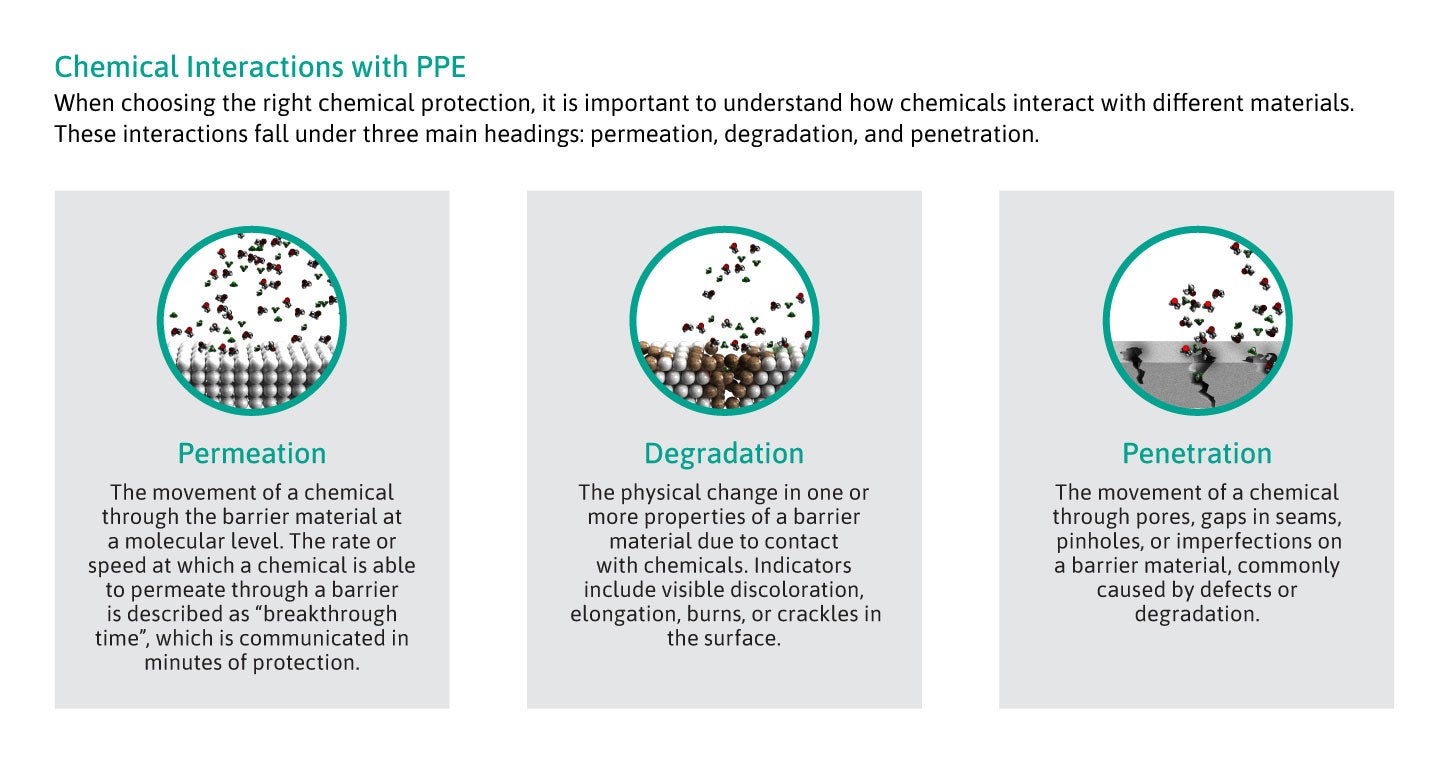What's New
Chemical Glove Selection Considerations

With over 60 million registered chemicals, finding the right chemical protective glove is not an easy task. Workers can be exposed to hazards in a variety of ways. To understand chemical exposure risks, it is important to know the potential means for contamination (such as vapor, spray, splash and immersion) and the route of exposure to the worker (inhalation or skin absorption).
One Glove Does Not Fit All
Chemical-resistant gloves come in a variety of barrier materials, thicknesses and designs. Common materials used as coatings are nitrile rubber, polychloroprene (neoprene), butyl, Viton, natural rubber or vinyl (PVC). While each barrier material protects against a spectrum of chemical groups, each also has weak points – chemical groups or mixes where the ability to protect is less effective. Safety managers must evaluate the risks and select protection that adheres to applicable PPE legislation. There is no one solution, so carefully identify the best option for the unique set of chemicals and liquids that matter most in your application. For multiple hazards, advances in material and technology offer gloves with chemical and cut protection, so double gloving should be avoided to allow the right balance of comfort, dexterity and grip.

Standards such as EN ISO 374 and ASTM F739 have been put in place to assess the relative performance of materials against interactions such as permeation and degradation. A common way to compare protective properties of materials is through use of breakthrough times – the time taken for the chemical to permeate the material at rate defined within the standard.

The chemical glove selection process doesn’t have to be a solo exercise. Your Vallen Sales Rep can be a vital partner in identifying hazards and assessing options with a free AnsellGUARDIAN® assessment.
